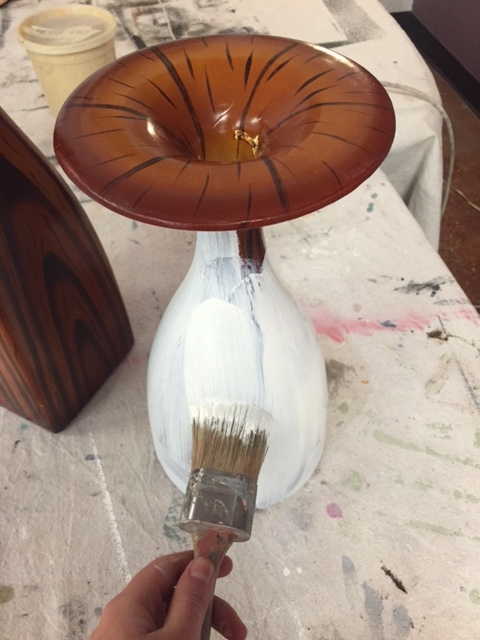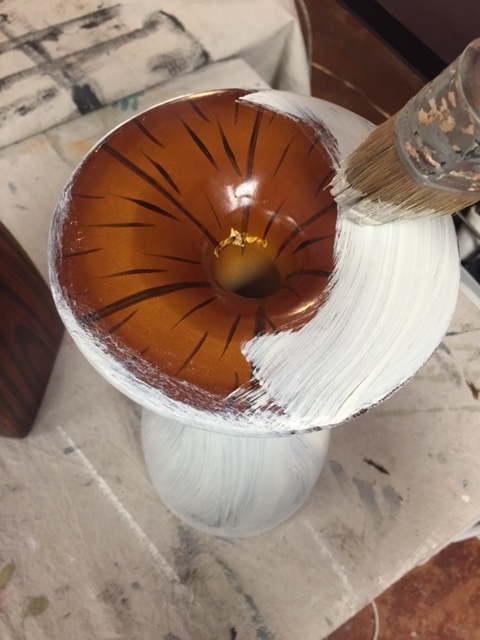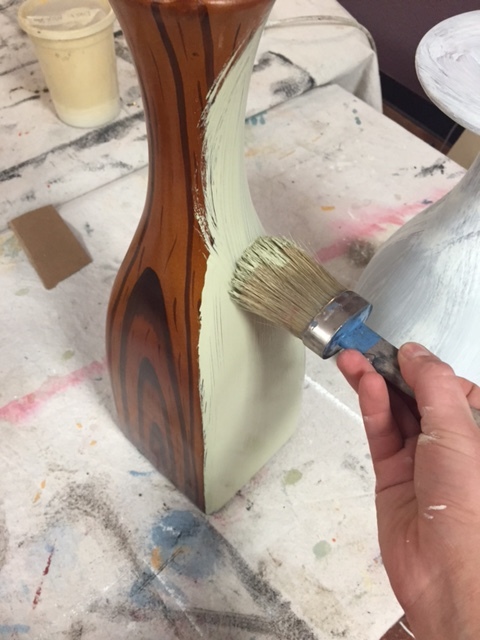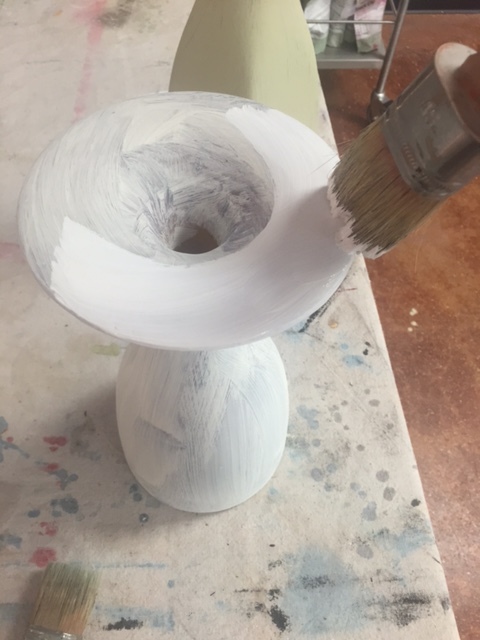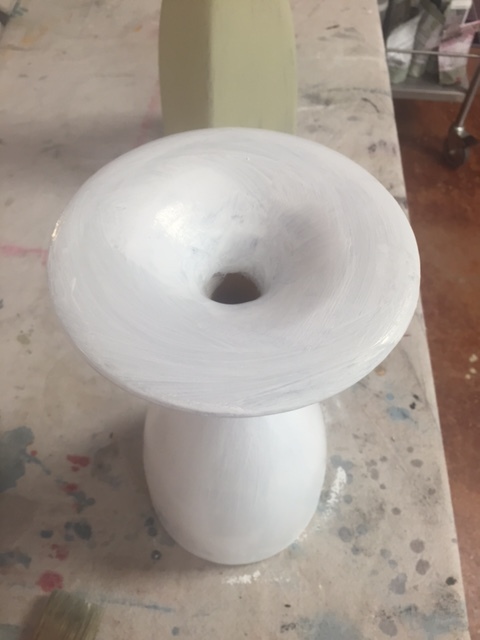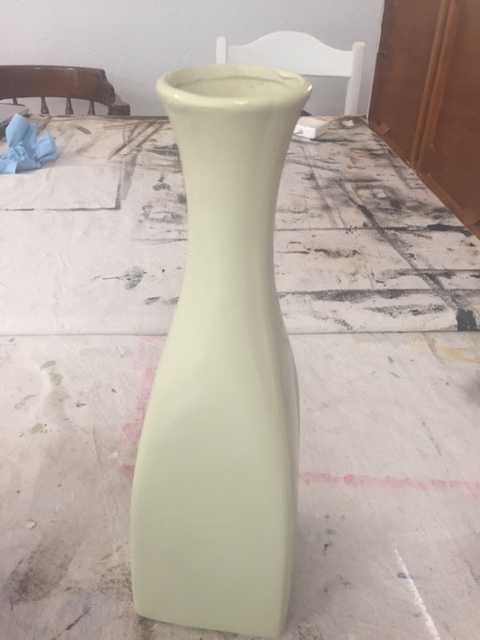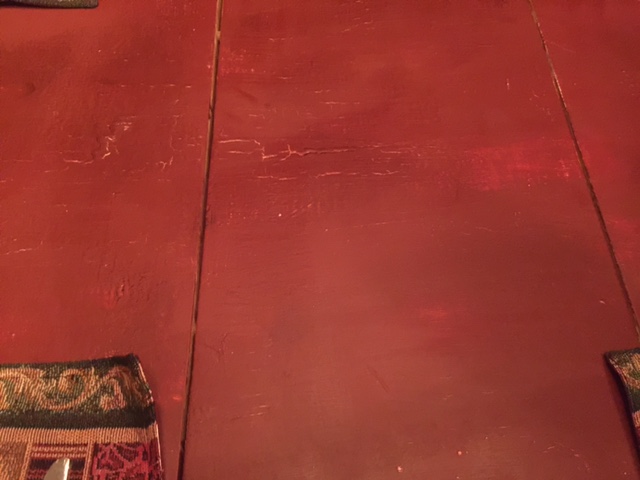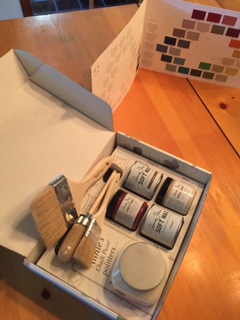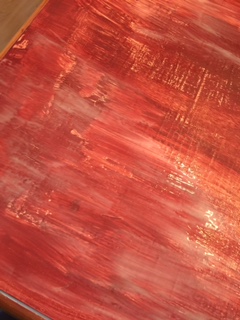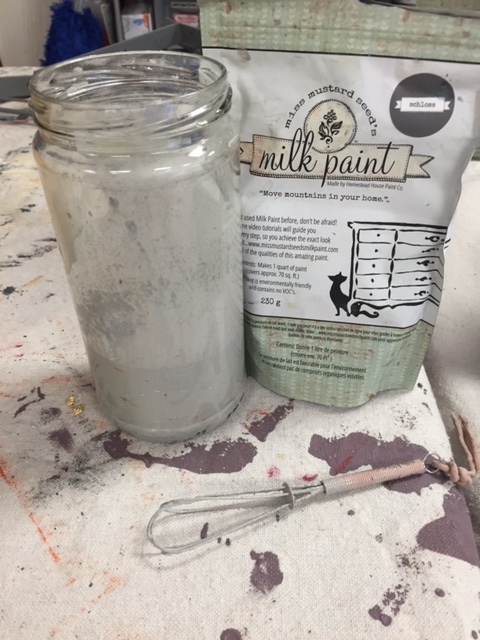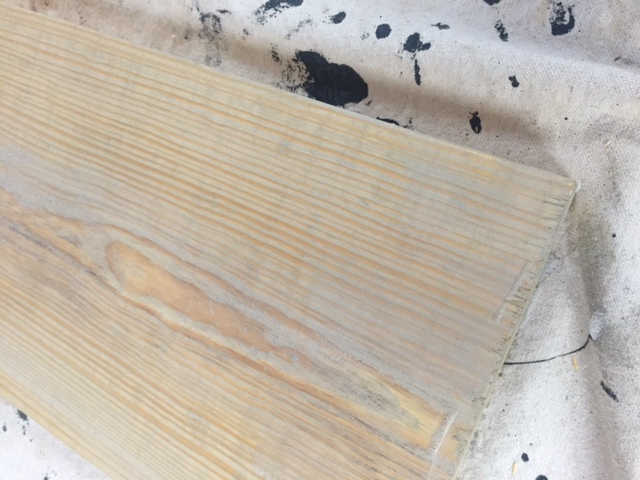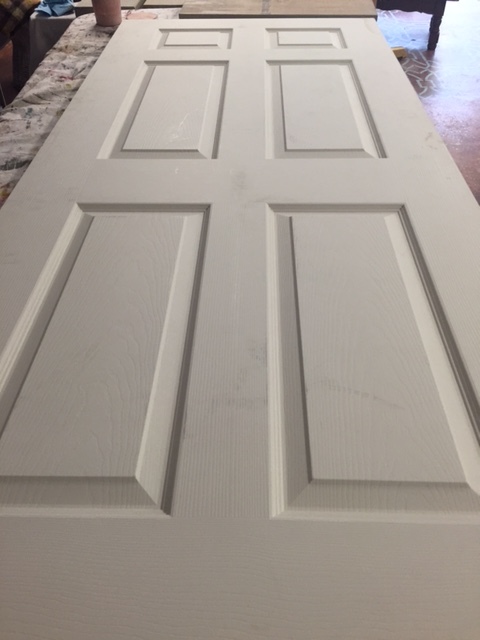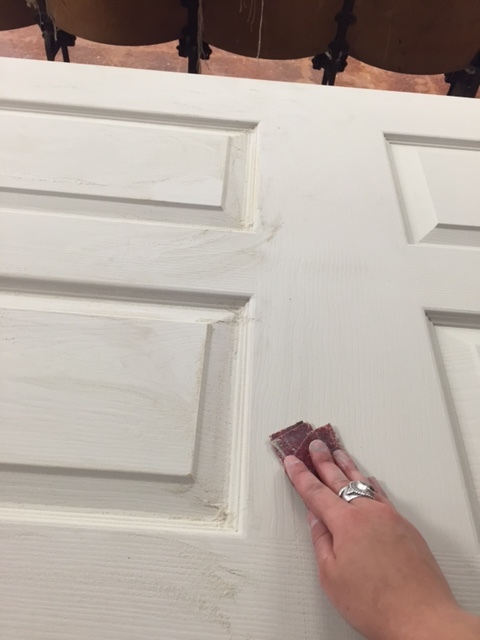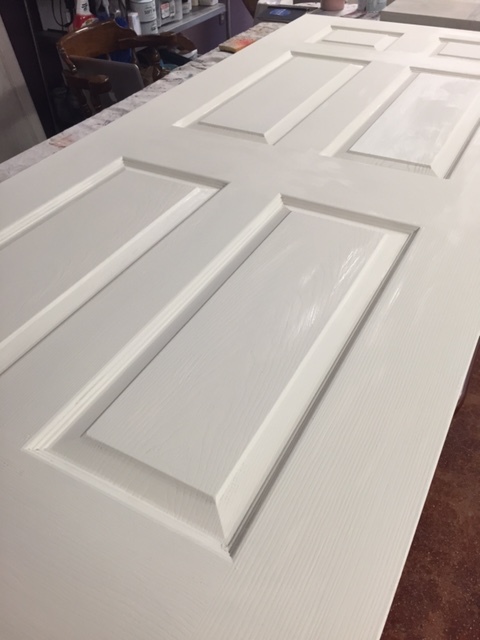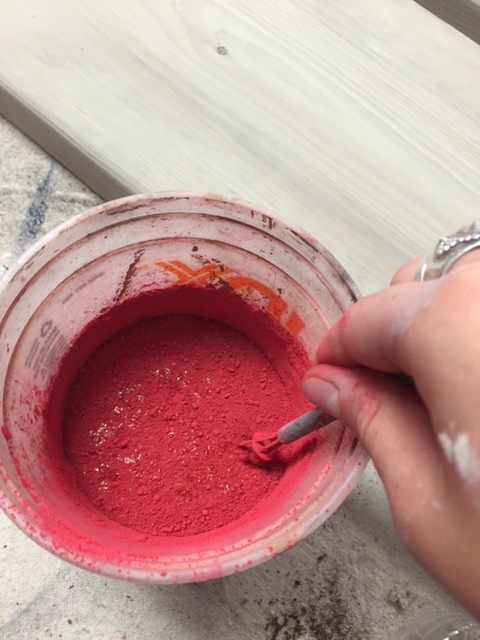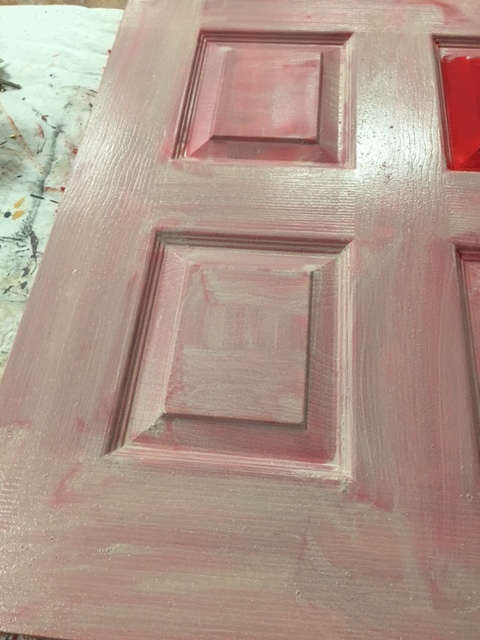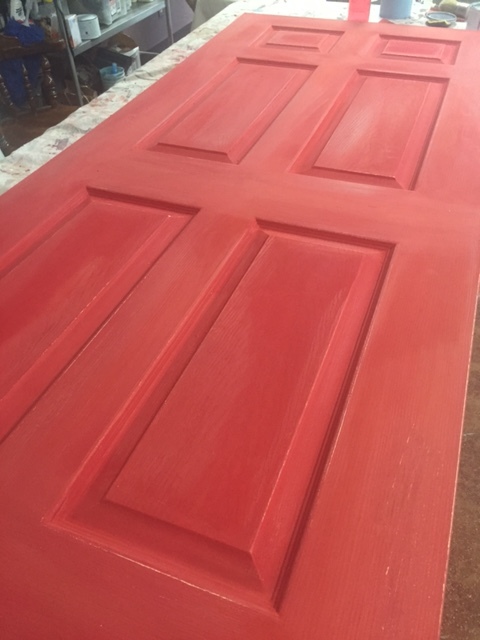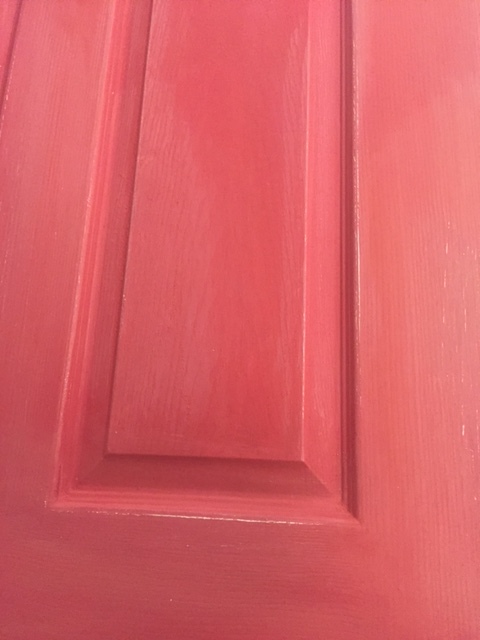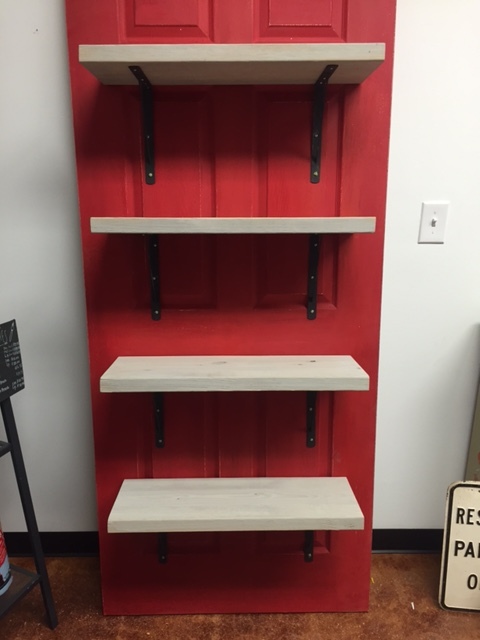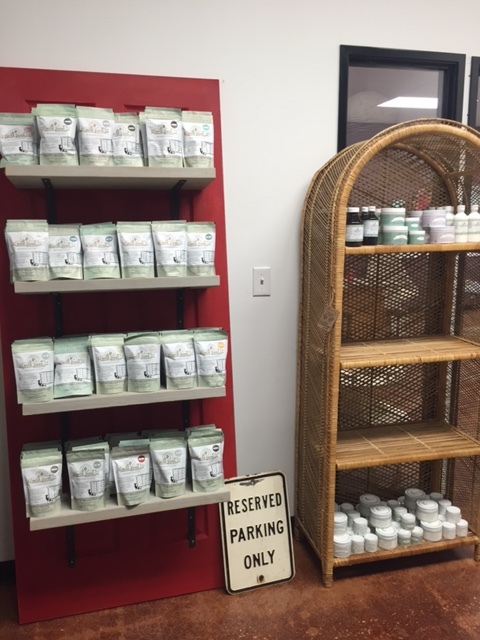
Guest Blog Post- Color Blocking Organizing
A guest blog post by Sharon Munroe, featuring a collaborative project with her son.
Guest Blog By Sharon Munroe
Having begun painting furniture this summer I am looking at wood furniture in my home in a whole new way. My family has caught onto this trend and each of my three children wants a part in painting. I decided that I will work with each of them individually to plan and paint something old or new for their bedrooms.
First up, my eight-year old who I fondly call “the pack rat.” Since my son was about three years old he has been a maker and tinkerer. To satisfy his creative and builder instincts, he saves odds and ends. They end up everywhere, including in the corners of his small bedroom. My son also has an interest in art and color. He has had the opportunity to draw and paint since he was a toddler. His favorite activities lately are making comic book drawings and crochet. Since he was able to hold a pencil, I have him a sketch pad to use in his car seat.
We decided that our project together would be one focused on organization and color. I own an old-fashioned, shaker-style organizing unit that once sat on a kitchen counter. With my kitchen remodel some 10 years ago, the organizer was relegated to a closet where it collected dust. It turns out that the dark, wood stain on it matches the color of my son’s bedroom furniture. We could make the unit match his room’s decor easily. With the help of Katie at Silk and SageDesign Studio, I wanted to try something a bit different.
Katie and I discussed the project in person and how to achieve a look with multiple paint colors. I often visit during my lunch break at work. Silk and Sage is open from 11:00AM to 7:00PM Tuesday through Friday (plus weekend hours). Originally, we considered doing stripes of green and yellow paint to match the bedroom’s wall paint and another small dresser inside. By looking at the Annie Sloan Chalk Paint® Colour Card at home, my son and I had selected bright Antibes Green, just like his bedroom wall color and the sunny shade of English Yellow.
Once back in his room, the inspiration came to me. Color blocking this very rectangular piece would make it fun for a child’s room. Leaving part of the surface in the dark stain would make it look very customized to the existing dark furniture. The best part was that my son had done color blocking on a canvas in an art program a year earlier and that piece was already hung above the dresser and the new spot for the painted organizing unit.
He was excited to help with the project so I reviewed all of the steps with him and asked him to paint the larger flat surfaces, including the top and side of the unit plus one of the fronts of the drawers. With his apron on and a paintbrush in hand, he was happy to help.
How to Color Block in a Few Easy Steps:
1. Clean the entire surface you are going to paint with a damp, soft rag. Follow with a dry soft rag.
2. Mark off areas that are not getting painted with two layers of painter’s tape. Two layers means that the paint is less likely to run into the other surface.
3. Apply a coat of one color Annie Sloan Chalk Paint® throughout the piece.
- Alternating sections of color to the left/right or up/down makes it more visually interesting.
4. Apply a coat of the second color in your pattern. (Repeat if you have a large piece with a third or fourth color.) Let the first paint coat dry thoroughly.
5. If the original color of the wood is dark as mine was, apply a second coat of each paint color. It evens out the tone and provides full matte coverage.
6. Use a soft pure bristle brush to apply a coat of Annie Sloan’s Dark Soft Wax (looks brown) to the parts of the piece that you want to keep dark. This gave shine and new life to my piece.
7. Apply Annie Sloan’s Clear Soft Wax to give the newly painted areas an allover smooth surface.
8. Wipe off any extra with a soft shop towel, similar to a paper towel but thicker and without any lint. Let the furniture dry overnight.
Now see the painted and refinished organizing unit in my son’s bedroom, ready to be the new home of his favorite drawings, yarn and odds and ends.
Painting Over Metal
How to use Chalk Paint® by Annie Sloan to paint on metal, or other slick surfaces (such as glass)!
Have you ever tried to paint over metal or glass? Was it successful or unsuccessful? Pinterest and the rest of the blogosphere are saturated with photos of DIY painted mason jars and similar items, and if you're lucky you'll get an accompanying tutorial! But not always.
I've used Chalk Paint® to successfully paint over both metal and glass countless times- windows, jars, vases, cast iron furniture, you name it. However there are some key steps to achieving success! I painted these metal vases over the weekend and documented what I did. They had a not so fortunate (faux-tiger?) pattern on them to begin with, but they had great bones (great forms). Why not upcycle with these steps?
1. Step 1 of painting over any item, furniture or otherwise, is to clean it really well! I'm talking a damp cloth at the very least- soap and water or vinegar and water are preferable. If the item has any gunk, stickiness, or looks worse for ware, you can always clean with Krud Kutter or another similar biodegradable degreaser. ALWAYS make sure to wipe down with a damp cloth afterward to remove any potential lingering cleaner residue, and then let dry thoroughly.
2. Once dry, start with your first coat of paint. Over metal (or glass) the first coat may look very brushy or streaky. Not to worry though! Your first coat of Chalk Paint® is basically a priming coat. When the paint sits over a slick surface, like metal or glass, it will need to sit on extra long before you add a second coat, so that it has time to really adhere to the surface. If possible, sanding your slick surface will also increase adherence. Here I chose Versailles and a first coat of Old White (though I followed up later with Pure White- I did a coat of the Old White first because it would block the dark pattern underneath better- true Pure Whites don't contain pigment and therefore are a little sheer).
3. When I state that the first Chalk Paint® coat needs to sit on for extra long before the second, I mean let it sit undisturbed over night. Come back to it the next day and apply a second coat. For the vase I painted Versailles, the second coat was enough. However, since Pure White was a little sheer, I waited over night again before applying a third coat as well.
4. If leaving the paint as-is, you can go ahead and seal with Annie Sloan's Soft Waxes, or another compatible water-based sealer. If you wanted to distress, do a wash, or any other decorative technique, you'd do that before sealing. Let dry to the touch (24-48hrs) before using!
I didn't stop there though... I wanted to add a metallic pop to the bottom of each vase using gilding leaf. Gilding leaf is applied wherever you add gilding size, or the glue, and won't stick wherever there isn't the size. It brushes on very milky but dries clear and tacky. Once tacky, guide the gilding leaf on and press down using your fingers and a craft chip brush, pressing it down firmly. I chose imitation gold leaf for the Versailles vase, and copper leaf over the Pure White vase.
If you find that the gilding leaf gets stuck to your hands, dip your hands in corn starch and that will prevent this from happening. After you're satisfied with applying gilding leaf, rub your craft chip brush over the leaf to burnish it and remove excess metallic flakes!
You can seal the leaf with Annie's Soft Waxes too, but since I wanted to give someone the option to use these outdoors, I sealed with Clear Topcoat Sealer by Artisan Enhancements® because it is an exterior-grade sealer. It works well with Chalk Paint® by Annie Sloan. *Please Note: over Pure White, it can penetrate and bring up tones from underneath the paint- I did not mind this aspect here, but when using over Pure White on furniture or decor, you should seal prior to painting (seal with a coat of Clear Topcoat Sealer- it can be used as a clear priming coat that blocks stains, colors, odors, etc).
Brush the Clear Topcoat Sealer on with a very soft natural bristle or synthetic bristle brush- it can also be rolled with a foam roller. When applying, you're going to use the tiniest bit on your bristles. It should look clear and wet, not milky. If you notice you're applying too much, try to spread it over your surface as much as possible, keeping your brush moving from one spot to the next as to not over process the surface. Let dry overnight (24 hours recommended) before applying a second coat, or before using. If the surface is still tacky, it may be that there's too much product left on the surface. Just allow it to dry longer if this happens!
And there you have it! You can replicate this at home with any of the same materials. Stop by our online shop to look at Chalk Paint® by Annie Sloan, color choices, and sealer options!
Annie Sloan's Black & White Wax Week
Join us in celebrating Chalk Paint® Wax Week by Annie Sloan! In-store events and demos to follow!
Starting Tuesday July 19th (we're closed on Mondays!), we'll have in-store demos between 1-3 PM for the new Chalk Paint® Black and White Waxes! Stop by for some fun- we'll have snacks and refreshments.
**On Thursday July 21st, we'll have a special adult-friendly waxing demo session from 5-7 PM featuring WINE AND CHEESE! Bring your questions about your next project(s), and bring your friends!**
Guest Blog Post- Sharon's Crackled Dining Table
Guest Blog Post by Sharon Munroe- how she transformed her dining table with Chalk Paint® and Soft Waxes, plus Crackle Tex by Artisan Enhancements®
Our friends and customers have been exploring different techniques over an array of projects. Recently we had one such experience shared with us by Sharon Munroe, who writes below about the transformation of her pine dining table with Chalk Paint® by Annie Sloan and Crackle Tex by Artisan Enhancements®. We're excited to share her guest blog post today!
Guest Blog by Sharon Munroe
On the last Sunday in June, my friend Morgan and I had a great experience learning new painting techniques with Katie, an artist and co-owner of Silk and Sage Design Studio, which opened in the Village Shopping Center this past spring. A painter myself in an earlier time, opting to take studio art instead of a sport in high school, I felt the urge to learn a new creative skill. Why not get back into painting and breathe new life into some old furniture? Morgan wasgame and Katie taught us how to use many of the products that are the staples of her studio. Morgan refinished a night table and I worked on a desk chair.
With some new skills and confidence from our hands-on studio session, I went back to see Katie for my next project, a more ambitious one that I would do on my own. With the Fourth of July holiday approaching, I would have more time to take on a project plus I knew Katie would be available if I needed anything. (Silk and Sage Design Studio is open both on Saturdays and Sundays.) Katie armed me with paints, brushes and details on how to paint the table on my own.
My project was a 25-year-old, well-worn pine dining table that would receive a brief sanding, followed by Chalk Paint® by Annie Sloan, followed by Crackle Tex by Artisan Enhancements®, and more Chalk Paint®. The Broyhill pine wood furniture bought in 1992 in New Jersey at a store with a dubious name, Unclaimed Freight, has lived a good life since leaving New Jersey, in California for a few years and in my Austin home’s dining room since 1998.
In recent years the table has been well used by my three young children who spill milk and occasionally nick it up with silverware. Last year, some lovely green placemats, a gift from Cambodia, graced the table. During one of the frequent milk-spilling incidents, we learned that those placemats are not colorfast. The table turned green, requiring permanent use of a table cloth. Now it was a prime candidate for a new paint job.
The table sits in a dining room where the decor is decidedly Americana. Wallpaper with a crackle-like finish adorns the bottom of the room, a green checked pattern dominates the top two-thirds of the walls and a border with a New England seaside scene in between. The decor evokes the style of the late Charles Wysocki, an artist who exclusively painted scenes of Americana.
Here are the Steps I Took to Make the Crackle Finish on a Wood Dining Table in a Weekend:
1. Friday night, I cleared the dinner table and took out a handheld sander. I lightly sanded the spots with the fork marks, the green dye from the placemats and a few other rough spots.
2. Next, I wiped down the entire table with a soft rag and followed it with dry rag. (If the sander and rag would not have been enough, I was prepared to use a little Krud Kutter. This brand has many products to help prepare and cleanup painted surfaces.)
3. Then I applied my first coat of Chalk Paint® in a color called Old Ochre, which is in the beige family, letting it dry for an hour.
4. Next, I applied a thick coat of Crackle Tex, which when it sets, acts as the agent to crackle the finish of both the paint coat above and below it. I let this dry overnight.
5. Then, Saturday morning I gave the table a thick coat of Primer Red. Primer Red actually looks like the color of an aging barn or farmhouse with its brown tones, perfect for a wood table in an Americana-style room.
6. To further activate the crackling, I sprayed a light spray of water on the entire surface and brushed it softly with a paint brush. I repeated this step three times on Saturday and early Sunday to get more deep, rich crackles and revealing the Old Ochre paint below.
7. Once the water and red paint had fully dried by Sunday afternoon, I used a soft pure bristle brush to apply a coat of Annie Sloan’s Clear Soft Wax to give the table an allover smooth surface. I wiped off any extra with a soft shop towel, similar to a paper towel but thicker and without any lint.
8. Next, I used a small amount of Annie Sloan’s Dark Soft Wax (looks brown) to give the table a bit of an aged look. This was used sparingly. Dark Soft Wax is by far my favorite product since it gives any painted surface a dull, aged look.
Proud of my handiwork and glad that the techniques worked out so well, my dining room table feels new and fresh. It’s ready for brunch on Independence Day. Now I am cooking up my next project, which will likely be a wood desk for my eight year old to use for school work. Back-to-school days will be here before we know it.
DIY Reclaimed Door Shelves- Welcoming Miss Mustard Seed
Miss Mustard Seed comes to Austin, TX's Silk and Sage Design Studio! Learn about our fun, DIY reclaimed door shelving project to use for her product display.
Things have been busy and bustling around the shop since we opened in March. We've been bringing on additional product lines that compliment what we already carry, and I'm so proud to say that we're now also a stockist of Miss Mustard Seed's Milk Paint, waxes, and painting sundries!
Naturally, we needed an epic and fitting way to display her product, and an idea that I had (inspired by Pinterest) was to repurpose an old door and attach wooden planks to it to function as shelves.
For those of you not familiar with milk paints or Miss Mustard Seed, I'll give you some background pending a fuller blog post on specifics. Milk Paints are a powdered milk and pigment paint that you mix yourself- usually using water. It's a traditional style of paint rather than a trademarked formula, however every brand recipe is of course unique. What was used in the prehistoric cave paintings? A form of milk paint. What's on that extremely chippy 200 year old French antique dresser at the antique mallI? A form of milk paint. I prefer Miss Mustard Seed's paints and sundries for many reasons, including the packaging, consistency when mixed, and the color options (oh my!). Yes I'm also biased because I now carry the line... but hopefully you'll have a chance to explore her line and mix paints yourself to see!
And so one day I set off to create our shelving unit while I waited for our products to arrive. To do this you'll need:
- cut wood planks (quantity determined by what spacing/how many shelves you want)
- 2 shelf brackets per shelf (one for each side)
- screws and screw anchors (for added security)
- drill and bits
- level
- door (quite possibly the most essential part!)
- paints or finish of choice
I had a raw wood plank cut so that each 'shelf' was the same length. If you do this you'll want to make sure you have shelves that are just the right width and depth, without being too heavy to be supported by the brackets (having the screw anchors will also help with securing the weight). Then I sanded off the splinters from each shelf, and made a lovely grey wash from a quart of the color Schloss. *Notice it comes in a resealable baggie!* Like a regular wash, the water was greater compared to the paint in the mix ratio. I applied in thin layers, to build up the color- raw wood will also absorb way more paint than sealed wood, so I always like to judge the color after it's dried.
The door I chose definitely had some strange laminate/MDF finish to it, so besides cleaning thoroughly, I also sanded to recreate a tooth to the surface, and primed. With any milk paint, adherence to a slick or finished surface can be particular when just slapped on by itself. It's best to take the steps I did to provide the cleanest, most absorbant environment for the paint to be layered onto.
Additionally, adding Miss Mustard Seed's Bonding Agent (almost like a glue for the paint) into your mixture will greatly increase your success over a pre-finished surface. I chose the beautiful red, Tricycle, for the door. When mixing, it's best to begin with a 1:1 ratio of water to paint, adding more water or paint afterward to achieve the desired consistency. Mix it for a couple minutes to start, then let it sit for roughly 10 minutes to let the pigments fully disperse. You can whisk by hand, use a blender, or use one of her handy dandy electric mixers (looks like a latte milk frother). I did a thorough base coat of Tricycle to prepare for a 2 color distress technique.
A thin coat of my leftover Schloss went on next, followed by one more coat of the Tricycle. I sanded lightly in areas to distress and give a look of barn wear-and-tear. Remember, less is often more with distressing. Miss Mustard Seed's Milk Paint is also more versatile than to only be used for rustic techniques- you CAN absolutely use it for sleek and modern techniques too!
Once the paint dried, I waxed with her Furniture Wax (clear). I laid the door flat on the floor so it would be less strenuous for me to attach the shelves while holding them up at the same time. I had to play with the techniques and plan out my next course of action- measure twice, cut once! For me, the easiest way was to attach the brackets to each shelf first, then align them to the door to plot out my pilot holes for the screws. That way, once the pilot holes were drilled, I could just match the shelves and brackets up to them and screw them unto place with the anchors all at once! Then prop the door up to the wall... and voila! If you do this, your level will be your BFF for the last steps.
And now Miss Mustard Seed's product lines are sitting pretty. The reclaimed door shelving is mostly utilitarian, however we feel its whimsy fits her branding well.



